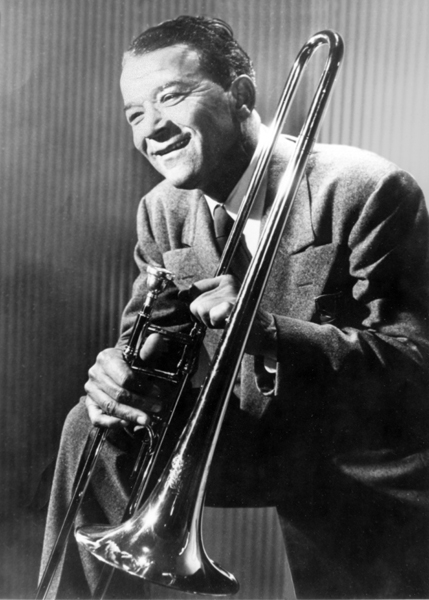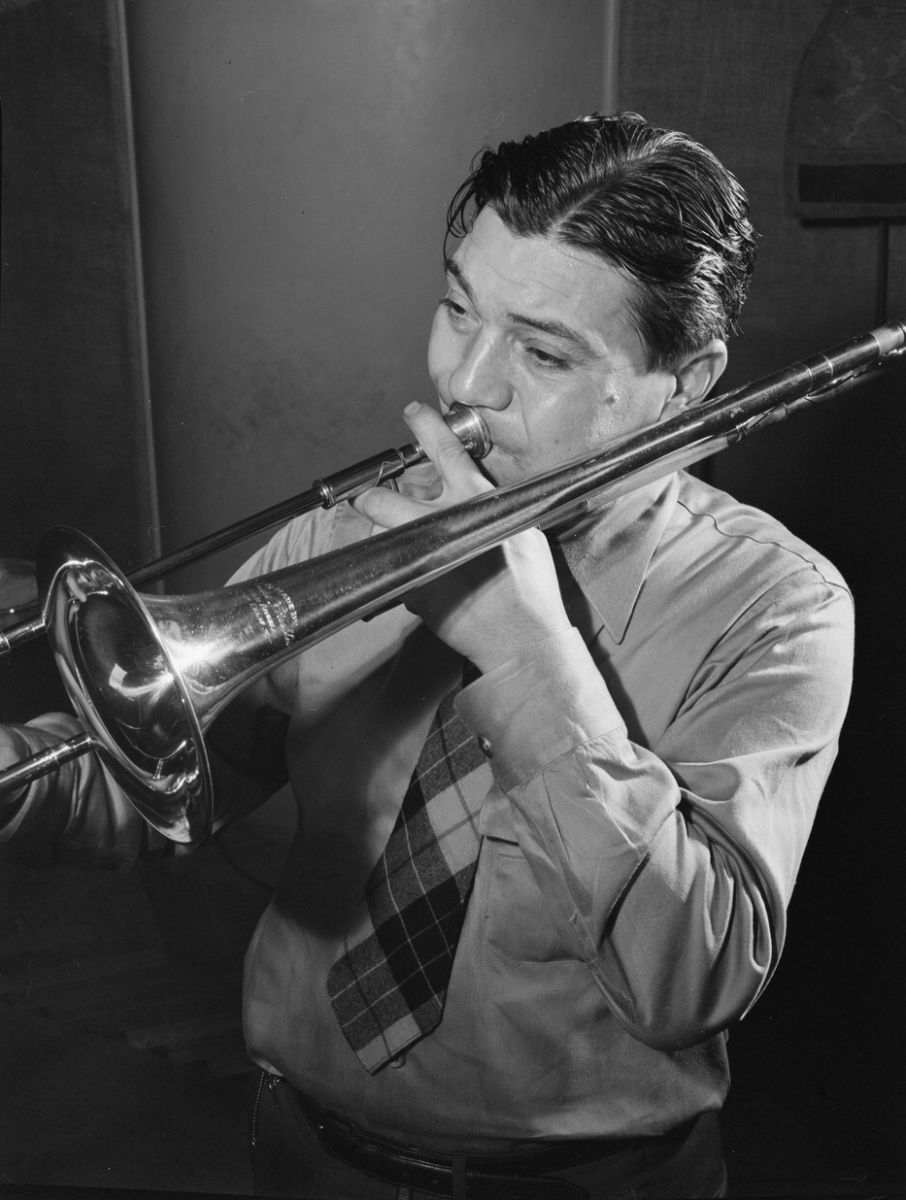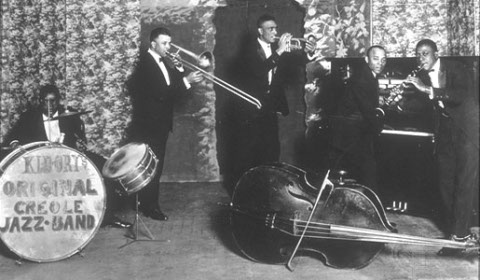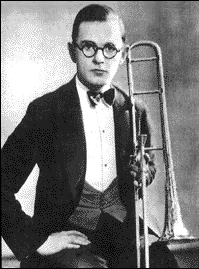The trombone is a middle or 'tenor' voice in the brass family. It is most commonly pitched between the cornet and the tuba, but the trombone can cover a range of some 5 octaves from the bass to high tenor ranges.
What sets the trombone apart from all other instruments is its primitive slide mechanism—dating from medieval times—whereby the player changes the length of the tubing, thus allowing the instrument to play all the notes of the scale. Since the slide is not stopped or notched on a fixed pitch the characteristic trombone sound is that of the sliding note, or 'glissando' or 'smear.'
Kid Ory's Tailgate
Trombone
This sliding capability of the
trombone enables an especially
expressive voice for the blues,
in which the 'blue notes' are
'moving targets' and not limited
to a fixed pitch as in, for
example, the piano. So the most
blues-oriented players of the
trombone in early jazz—Kid Ory,
Jack Teagarden, J.C.
Higgenbotham and others—produced
a vocal blues tonality that was
very close to that of the great
blues singers of the
day, Gertrude 'Ma' Rainey and
Bessie Smith.

Edward 'Kid' Ory in the 1940s. Photo courtesy knowla.org.
Ory was a monumental figure among the first generation of New Orleans jazz men. His band of 1910 had the tremendous star power of both King Oliver and Louis Armstrong. Ory would become one of the key inventors of the trombone style known as 'tailgate,' a term inherited from the days of fierce street competition among early bands who advertised by playing on the beds of 'ballyhoo wagons.'
The New Orleans tailgate style consists of a rhythmic, blues-y, sliding support of the clarinet and cornet, incorporating elements of both tenor counter-melodies and bass notes. The tailgating trombone is an important characteristic element of the jazz polyphony—'many sounds' or multi-voices—we have come to know as the traditional New Orleans sound, and which was echoed in the Swing Era sound several decades later.
This Week on Riverwalk Jazz
To celebrate pre-WWII jazz trombone styles Riverwalk Jazz joins forces with leading players active today. Though all of them claim Jack Teagarden as a major influence and model for their playing, some have taken a special interest in the playing of other lesser-known but important historical figures of the trombone world.
California native Dan Barrett and current JCJB trombonist Kenny Rupp pay tribute to the distinctive style of star soloist Vic Dickenson. The muscular, high-energy West Coast trombonist Abram 'Abe' Lincoln inspired former Jim Cullum Jazz Band member Mike Pittsley, Chicago’s Russ Phillips and Floridian Bill Allred. And the angular solo style of Bix Beiderbecke cohort Miff Mole gets a nod from Bob Havens.

Trombone giant Jack Teagarden. Photo by William P. Gottlieb, courtesy Library of Congress.
1930s' Trombone Innovations to Bebop
Two players of the 1930s were especially innovative. Jack Teagarden greatly expanded the capabilities of the trombone while still exploiting the blues potential of the slide. Tommy Dorsey, also deeply rooted in the blues, pioneered and perfected an upper-register 'singing' approach that spawned generations of stylists. Players in the post-WWII modern jazz style of trombone almost completely abandoned tailgating and, like their stylistic comrades on the other instruments, avoided sliding blue notes in favor of a far more dexterous, highly-articulated fixed-pitch approach more suitable for playing the complex, fast-moving lines of bebop masters such as Charlie Parker and Dizzy Gillespie.
Photo credit for Home Page: Trombonist Kid Ory. Photo courtesy lastfm.
Text based on Riverwalk Jazz script by Margaret Moos Pick ©2011



